25 Bold Traditional Turkish Ground Meat Dishes Worth Tasting
Ground meat has been a cornerstone of turkish cuisine for centuries, weaving rich cultural narratives through its versatile culinary techniques.
Skilled home cooks and professional chefs transform simple ingredients into extraordinary meals that reflect regional traditions and family histories.
The robust flavors emerge from carefully selected spices and time-honored preparation methods that elevate basic proteins into complex, satisfying dishes.
Regional variations showcase incredible diversity, with each area contributing unique twists to classic recipes that tantalize taste buds and connect generations.
Meat preparation reflects deep cultural pride, blending techniques passed down through families with innovative cooking approaches that respect traditional foundations.
Culinary artisans masterfully combine ground meat with aromatic herbs, vegetables, and strategic seasoning to create memorable dining experiences.
These dishes represent more than simple meals - they are edible stories connecting people through shared gastronomic heritage.
Dive into these 25 traditional turkish ground meat dishes that promise to transport you through a flavorful cultural journey:
Which Turkish Ground Meat Dishes Are Must-Tries?
Turkish cuisine features ground meat in a variety of mouthwatering ways. Spiced, grilled, or baked, these classic dishes offer bold flavor in every bite.
Tire Koftesi
Tire koftesi embodies a signature Turkish meatball specialty crafted with precisely ground lamb or beef blended with soaked bread, aromatic onions, and fragrant spices.
Regional butchers in Izmir carefully select premium meat for these distinctive meatballs, ensuring exceptional flavor and texture.
Shallow-frying creates a crispy golden exterior while maintaining an incredibly tender interior.
Traditional preparation involves mixing ingredients by hand to preserve authentic techniques.
Regional variations might include subtle spice adjustments or unique serving styles.
Family recipes pass down generations, maintaining intricate preparation methods.
Experienced cooks recommend using fresh, high-quality meat for maximum taste.
Turkish households serve these meatballs with rice, salad, or yogurt as a complete meal.
Adana Kebap
Adana kebap embodies Turkish street food's bold, spicy essence as a signature grilled meat specialty originating from southern Turkey's Adana region.
Ground lamb mixed with tail fat creates its distinctive deep red color and intense flavor profile powered by garlic, paprika, and hot red pepper flakes.
Skilled grill masters carefully shape meat around large metal skewers before charring the mixture to smoky perfection.
Traditional serving styles include spreading the grilled meat over warm flatbreads or tucking it inside soft pita with fresh parsley and sliced red onions.
Regional chefs meticulously season and prepare this street food classic using time-honored techniques passed through generations.
Lamb's rich flavor combined with fiery spices makes Adana kebap a mouthwatering experience for meat lovers.
Regional variations exist but authentic preparation remains consistent with its southern Turkish roots.
Sarma
Sarma is a cherished wrapped dish originating from Ottoman cuisine, featuring savory fillings carefully rolled inside tender leaves.
Minced meat, rice, herbs, and spices like paprika and sumac create its signature flavor profile nestled within vine, cabbage, or sauerkraut leaves.
Turkish culinary traditions spread this beloved recipe across Balkans, Central Europe, South Caucasus, and Middle Eastern regions.
Regional variations showcase diverse ingredient combinations and wrapping techniques.
Winter meals frequently feature sarma as a hearty comfort food.
Special occasions and holidays often highlight this traditional dish.
Families gather to prepare these flavorful rolls using generations-old recipes.
Kayseri Yaglamas
Kayseri yaglamas exemplify layered flatbread comfort originating from central Anatolia's culinary traditions.
Turkish regional cuisine features this hearty dish as a savory stack of thin flatbreads alternating with spiced minced lamb or beef.
Chopped onions, tomatoes, and green peppers intermingle with paprika, black pepper, and cumin between each bread layer.
Meat juices slowly saturate the soft flatbreads, creating an intensely flavorful experience.
Garlic yogurt accompanies the dish, adding a cool, tangy counterpoint to the rich meat mixture.
Cooks carefully assemble the yaglamas by stacking and spreading ingredients methodically.
Restaurant and home kitchens across Kayseri prepare this distinctive meal with regional pride.
Each serving offers a warm, satisfying blend of textures and robust spice combinations.
Beyti Kebab
Beyti kebab embodies Istanbul's street food mastery with its spiced ground meat expertly grilled and wrapped in buttery lavash bread.
Originating in Turkey, this iconic dish features lamb or beef mixed with onions, eggs, garlic, and aromatic spices like cumin and paprika.
Skilled grill masters carefully cook the seasoned meat on skewers until perfectly charred and tender.
Lavash pastry brushed with butter envelops the hot kebab in a crispy embrace.
Cooks slice the wrapped meat roll diagonally, revealing the succulent interior.
Bright red tomato sauce drizzled over the kebab adds a tangy contrast to the meat's rich flavors.
Creamy yogurt accompanies the dish, providing a cool complement to the warm spices.
Islama Kofte
Islama kofte are succulent Turkish meatballs that blend ground beef with grated stale bread, creating a uniquely moist and flavorful street food from Adapazar.
Regional cooks craft these meatballs by mixing beef with onions, garlic, cumin, paprika, eggs, salt, and pepper into compact rounds.
Skilled preparation involves carefully shaping the meat mixture and cooking the meatballs over medium heat until golden brown.
Bread slices get dipped in a rich beef stock and paprika mixture before grilling alongside the meat.
Adapazar's signature dish features a perfect balance of spices and textures that make it stand out in Turkish cuisine.
Grilling or frying ensures a crispy exterior while maintaining a juicy interior.
Regional variations might include slight adjustments to spice combinations or cooking methods.
Kofte
Kofta are savory walnut-sized meatballs bursting with regional Turkish flavors and culinary diversity.
Ground beef or lamb forms the base of these versatile bite-sized delicacies popular at social gatherings and special events.
Varieties range from spicy to mild, with different preparation styles across Turkey's regions.
Adana kofte from southeastern Turkey offers a bold taste profile with intense spices.
Eastern Turkish versions like icli kofte feature rich butter-filled centers that enhance overall taste complexity.
Egg-coated and fried kadin budu present another unique preparation method.
Each regional variant reflects local ingredient preferences and cooking traditions.
Served conveniently on toothpicks, these meatballs provide an easy-to-eat social food experience.
Karnyark
Karnyark showcases succulent eggplants packed with spiced ground beef in a traditional Turkish comfort meal that celebrates simple, bold flavors.
Mediterranean kitchens transform deep purple eggplants into hearty vessels stuffed with seasoned meat and aromatic vegetables.
Salt, pepper, and optional garlic enhance the filling's rich taste profile.
Baking transforms the ingredients into a harmonious blend of tender eggplant and juicy meat.
Restaurants and families typically serve karnyark warm or at room temperature alongside fluffy white rice and cool yogurt.
Regional variations might include additional herbs like parsley for extra complexity.
Generations of Turkish families have enjoyed this straightforward yet satisfying dish as a staple of home cooking.
Wet Burger (Islak Hamburger)
Islak hamburger dominates Istanbul's street food scene as a steamed burger soaked in zesty tomato sauce that transforms the traditional burger experience.
Turkish street vendors created this unique sandwich by drenching a beef patty in a spicy, tangy sauce and steaming it inside a soft bun.
Moisture from the sauce makes the bread incredibly tender and allows the flavors to penetrate deeply into every bite.
Istanbul's favorite quick meal originated in the bustling Taksim neighborhood, quickly becoming a go-to snack for locals and tourists.
Young people especially love this burger for its intense flavor and messy eating style.
Tomato-based sauce gives the burger its signature red color and wet appearance.
Each burger is prepared quickly and served hot, making it perfect for late-night cravings.
Street vendors across Turkey continue to perfect this iconic fast-food item that blends traditional and modern culinary techniques.
Cig Kofte
Cig kofte stands as a legendary Turkish street food blending raw meat traditions with spicy bulgur-based preparations.
Raw beef or lamb originally formed its core protein, mixed with tomatoes, onions, and intense Turkish spices.
Vegetarian versions now dominate due to food safety regulations, using ground bulgur and walnuts as primary ingredients.
Street vendors and restaurants across Turkey serve this dish cold as a popular meze appetizer.
Spicy and richly seasoned, the mixture combines complex flavors through careful blending of ingredients.
Modern versions closely mimic traditional recipes, maintaining authentic taste profiles.
Bulgur and walnut combinations create a texture remarkably similar to original meat preparations.
Regional variations reflect local spice preferences and ingredient availability.
Icli Kofte
Icli kofte are traditional Turkish deep-fried meatballs featuring a crispy bulgur wheat shell encasing a rich, spiced meat filling.
Skilled home cooks carefully craft these oval-shaped delicacies by blending bulgur with potatoes or semolina to create a smooth, protective exterior.
Ground lamb or beef mixed with chopped onions, walnuts, pine nuts, and aromatic spices form the savory interior stuffing.
Street vendors and family kitchens across Turkey prepare these protein-packed snacks as popular appetizers or main course dishes.
Crunchy on the outside and tender inside, icli kofte reflect generations of culinary craftsmanship and regional cooking traditions.
Mediterranean and Middle Eastern influences shine through in their complex flavor profile and intricate preparation method.
Guests often enjoy these meatballs as a warm, satisfying meal accompanied by yogurt or salad.
Regional variations exist throughout Turkey, with each area adding unique touches to this beloved national dish.
Inegol Kofte
Inegol kofte are savory Turkish meatballs originating from Inegol, a small town in northwestern Turkey, crafted by Bulgarian immigrant Mustafa Efendi in the late 19th century.
These iconic meatballs stand out for their unique texture and simple preparation method.
Ground beef or lamb blends with breadcrumbs and finely chopped onions to create a smooth, uniform mixture.
Skilled cooks shape the meat into distinctive oval forms before grilling or pan-frying them.
Regional variations exist, but the original Inegol recipe remains true to Mustafa Efendi's traditional technique.
Diners enjoy the meatballs as a main course or appetizer, celebrating their rich culinary heritage.
The dish represents a perfect example of how immigrant communities contribute to national cuisine.
Izmir Kofte
Izmir kofte embodies rich Turkish comfort cuisine with meatballs slow-cooked in a robust tomato sauce alongside peppers and potatoes.
Greek settlers in Smyrni (modern Izmir) originally crafted this hearty dish featuring ground beef or lamb mixed with onions, flour, stale bread, and eggs.
Spices like red pepper flakes, cumin, black pepper, and mint infuse deep flavor into the carefully formed meatballs.
Cooks traditionally prepare Izmir kofte either on a stovetop or baked in an oven for consistent texture and taste.
Ground meat receives careful seasoning before being shaped into elongated meatballs that absorb sauce during cooking.
Parsley garnishes the finished plate, adding fresh visual appeal and herbal notes.
Plain rice or crusty bread serves as perfect accompaniments to soak up the rich sauce.
Mediterranean ingredients and techniques shine through in this rustic, satisfying meal that tells a story of cultural culinary exchange.
Patlcan Dolmasi
Patlıcan dolması represents a savory Turkish stuffed eggplant dish bursting with regional flavors and culinary traditions.
Mediterranean kitchens transform dried or fresh eggplants into remarkable small parcels filled with ground meat, rice, and aromatic spices.
Regional variations include ingredients like mint, pomegranate molasses, onions, bulgur, currants, and pine nuts.
Turkish restaurants and home cooks carefully blanch eggplants to soften them before stuffing and cooking.
Mediterranean spices add depth and complexity to each carefully prepared bite.
Restaurants often serve this dish as a popular meze alongside grilled meats and breads.
Small eggplant vessels become delicious containers for rich, layered ingredients.
Generations have passed down this recipe through family cooking traditions across Turkey.
Dolma
Dolma are rolled grape leaves stuffed with rice and often ground meat, originating from Turkiye's royal courts in the early 7th century.
Persian King Khusrow II first popularized this iconic dish, which quickly spread across Muslim regions.
Turkiye embraces two primary dolma categories: meat-based and vegetarian versions.
Yalanci dolma, meaning "imitation," refers to meatless varieties prepared with olive oil.
Traditional preparation involves carefully wrapping rice, herbs, and sometimes meat inside tender grape leaves.
Skilled cooks create these compact parcels using precise rolling techniques.
Regional variations reflect local ingredients and culinary traditions.
Dolma serve as a beloved appetizer or light meal enjoyed throughout Mediterranean and Middle Eastern cuisines.
Biber Dolmas
Biber dolmas are succulent Turkish pepper parcels bursting with flavor and culinary tradition.
Turkish cooks stuff green or red bell peppers with a savory mixture of ground meat, rice, and aromatic ingredients like onions, pine nuts, and mint.
Regions across Turkey feature slight variations in their signature recipe, with some families adding raisins or extra spices for unique taste profiles.
Mediterranean influences shine through in the dish's preparation, reflecting generations of cooking expertise.
Beef or lamb typically serves as the primary protein, blending perfectly with soft rice and herbs.
Home kitchens and restaurants throughout Turkey prepare these peppers using time-honored techniques passed down through families.
Salt, pepper, and garlic enhance the filling's rich complexity.
Baking or simmering completes this beloved national dish, creating a tender, flavorful meal that represents Turkish home cooking.
Akcaabat Koftesi
Akcaabat koftesi represents a prized Turkish meatball specialty from Trabzon's mountainous region, crafted exclusively with local veal from carefully raised calves.
Skilled regional butchers grind tender veal into fine meat mixed with bread crumbs, grated onions, garlic, salt, and pepper.
Locals fry these unique meatballs until they develop a crispy golden exterior while maintaining a juicy inner texture.
Regional families serve the koftesi with fresh bread, grilled vegetables, and tangy yogurt sauce.
Trabzon's geographical landscape influences the meat's distinctive flavor profile from cattle raised in high-altitude pastures.
Generations have preserved this traditional recipe, passing down specific preparation techniques through family kitchens.
Rural communities consider these meatballs a significant culinary symbol of their regional identity.
Visitors frequently seek out this authentic Turkish dish for its rich, pure meat flavor and cultural significance.
Eggplant Kebab (Patlcanl Kebap)
Patlıcanlı kebap showcases Türkiye's rich culinary heritage as a mouthwatering grilled meat and eggplant dish originating from southeastern regions like Gaziantep.
Regional chefs carefully prepare this specialty by marinating ground lamb or beef with aromatic spices including cumin, red pepper flakes, and garlic.
Skillful cooks slice eggplants and soak them in salted water to reduce bitterness before grilling.
Seasoned meat is shaped into small köfte meatballs and threaded onto skewers alongside eggplant slices.
Each skewer is carefully grilled over hot coals to create a smoky, caramelized exterior.
Traditional preparation involves layering meat and vegetables to ensure balanced flavors and perfect charring.
Restaurants and home cooks across southeastern Türkiye serve this beloved kebab as a hearty main course accompanied by rice, salad, and flatbread.
Kadnbudu Kofte
Kadinbudu kofte embodies Turkish culinary creativity through its unique meatball design mimicking a woman's thigh shape during Ottoman times.
Ground beef or lamb forms the core ingredient, blended expertly with rice, onions, and traditional spices.
Eggs help bind the mixture, which cooks fold into an elongated shape before coating with flour.
Skilled Turkish cooks carefully deep fry these distinctive meatballs until they reach a golden brown exterior.
Crispy on the outside and tender inside, the dish offers a satisfying texture contrast.
Regional variations exist across Turkey, with some families adding specific herbs or spice combinations.
Restaurants and home kitchens alike celebrate this historical recipe as a testament to Ottoman-era cooking ingenuity.
Domates Dolmasi
Domates dolmasi are succulent stuffed tomatoes from Azerbaijan featuring ground lamb mixed with rice, herbs, and spices baked to perfection.
Mediterranean culinary traditions inspire this hearty dish packed with rich flavors and aromatic ingredients.
Lamb provides deep protein while rice creates a satisfying texture inside bright red tomatoes.
Onions, parsley, mint, and olive oil enhance the filling's complexity and taste.
Cooks carefully prepare the ingredients, mixing them thoroughly before carefully stuffing each tomato.
Traditional preparation involves standing tomatoes upright in large cooking pans.
Slow baking ensures meat becomes tender and rice absorbs surrounding flavors.
Families often serve these stuffed tomatoes as a main course during family gatherings and special meals.
Kabak Dolmas
Kabak dolmasi are succulent Turkish stuffed zucchinis packed with robust ground meat, fragrant rice, and aromatic herbs that highlight Mediterranean culinary traditions.
Turkish home kitchens prepare these savory vegetables by carefully hollowing out zucchinis and filling them with a seasoned mixture of ground lamb or beef, minced onions, and fluffy rice.
Regional variations might include tomatoes, parsley, salt, and pepper for enhanced flavor complexity.
Families often slow-cook these stuffed zucchinis to ensure tender texture and deep taste absorption.
Mediterranean ingredients create a harmonious blend of spices and textures in this classic Turkish recipe.
Rural and urban regions throughout Turkey embrace this dish as a staple comfort food.
Simple ingredients transform ordinary zucchinis into an extraordinary culinary experience that connects generations through shared meals.
Sulu Kofte
Sulu kofte embodies Turkish comfort cuisine through its richly seasoned meatballs swimming in a silky tomato-butter sauce.
Regional Turkish families prepare these tender beef meatballs with carefully blended spices and herbs for maximum flavor depth.
Rice accompanies the stew as a traditional side, while optional potato and carrot cubes enhance the dish's nutritional profile.
Water creates the signature thin, broth-like consistency that defines its name and unique character.
Butter adds a luxurious richness to the sauce, complementing the meat's savory notes.
Ground beef serves as the primary protein, ensuring a satisfying meal.
Regional variations might include slight spice adjustments or additional vegetable inclusions, reflecting local culinary traditions.
Harput Koftesi
Harput koftesi represent a savory Turkish meatball specialty hailing from Eastern Anatolia's Elazğ region, featuring a distinctive blend of ground beef and bulgur carefully mixed with aromatic herbs and spices.
Skilled cooks craft these compact meatballs by combining ground beef, finely chopped onions, fresh parsley, basil, and bulgur with subtle seasonings like salt, paprika, and black pepper.
Traditional preparation involves carefully shaping the meat mixture into small, uniform balls before gently simmering them in a flavorful sauce of oil, water, and tomato paste.
Regional culinary techniques ensure each meatball maintains a perfect texture and rich, balanced flavor profile.
Local restaurants and home kitchens across Eastern Turkey consider these meatballs a staple comfort dish deeply rooted in regional cuisine.
Generations have passed down the precise preparation methods, preserving the authentic taste and cultural significance of Harput koftesi.
Eksili Kofte
Eksili kofte stands out as a zesty Turkish meatball specialty featuring tender beef spheres simmered in a tangy egg-based sauce.
Ground beef mixed with rice and warming spices forms the base of these savory meatballs.
Cumin and black pepper add depth to the meat mixture, which is carefully shaped and gently boiled in rich beef stock.
Cooks prepare a silky sauce by whisking flour, egg yolks, and fresh lemon juice until smooth.
Red pepper provides a vibrant garnish that adds color and subtle heat to the dish.
Traditional preparation involves precise cooking techniques passed through generations in Turkish kitchens.
Regional variations might include slight adjustments to spice levels or sauce consistency.
Families often serve eksili kofte as a comforting main course during gatherings and special meals.
Manisa Kebap
Manisa kebap sizzles with robust Turkish culinary tradition, featuring perfectly grilled meat patties blending lamb and beef into a harmonious flavor profile.
Ground meats are carefully seasoned with traditional spices and skillfully formed into compact, juicy patties that char beautifully over open flames.
Soft pita bread becomes a delicious foundation, soaking up the meat's rich drippings and creating a satisfying base for the dish.
Charred green peppers and ripe tomatoes accompany the kebabs, adding fresh, smoky dimensions to each bite.
Creamy yogurt provides a cool counterpoint to the warm, spiced meat, while a drizzle of melted butter enhances the overall richness.
Restaurants across Turkey serve this regional specialty, showcasing the depth of Anatolian cooking techniques.
Regional variations might include slight tweaks to spice blends or grilling methods, reflecting local preferences.
What Are the Key Spices Used in Turkish Ground Meat Cooking?
Turkish cuisine brings bold and aromatic flavors to ground meat dishes, using a well-balanced blend of spices and herbs that enhance the natural richness of the meat:
These spices create the signature savory and fragrant profile characteristic of Turkish ground meat dishes, whether in köfte, mantı, or stuffed vegetables.

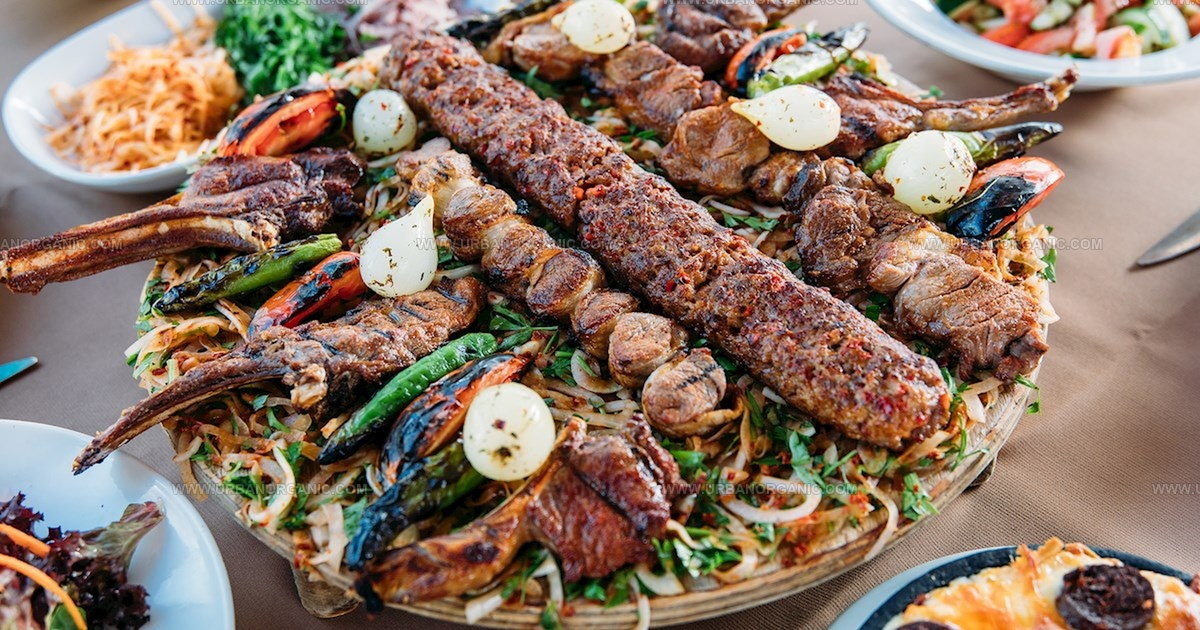
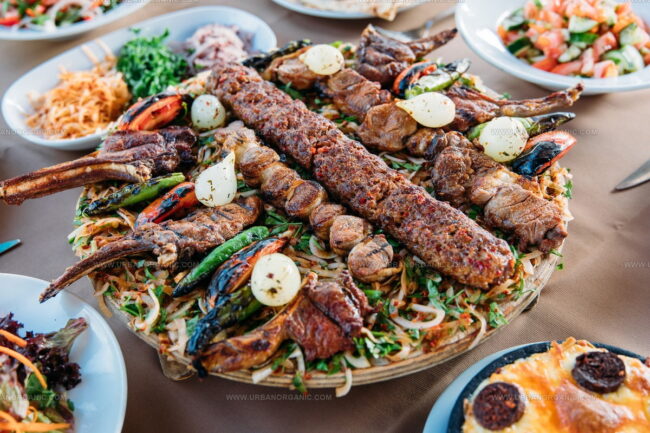
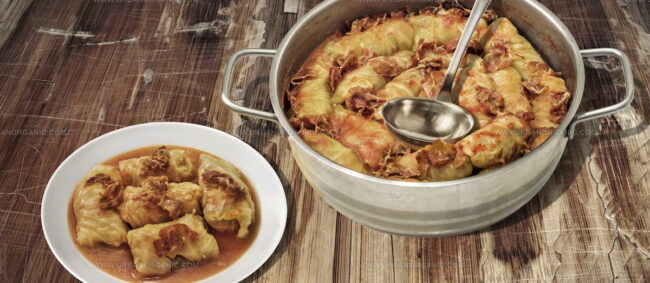
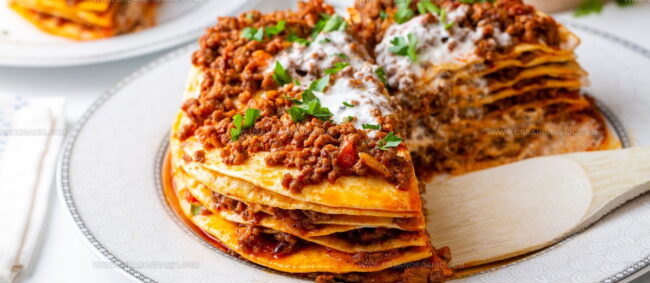
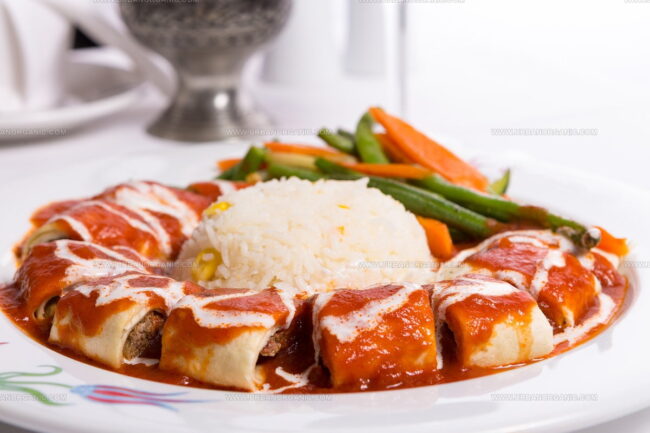
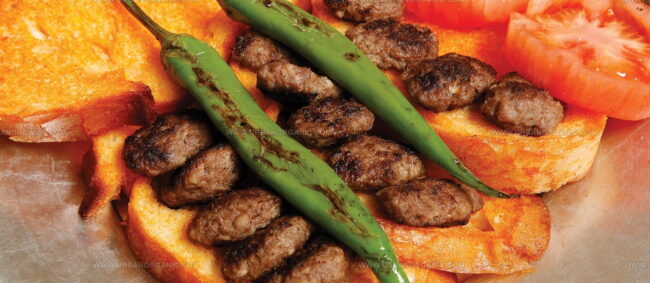
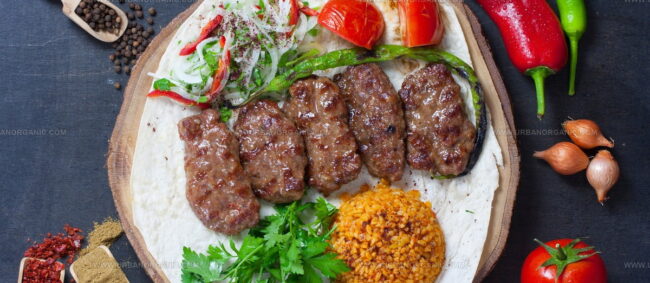
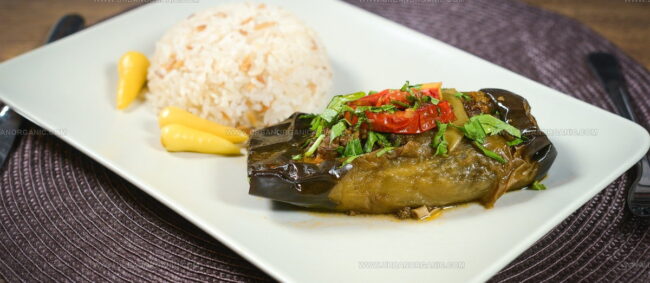

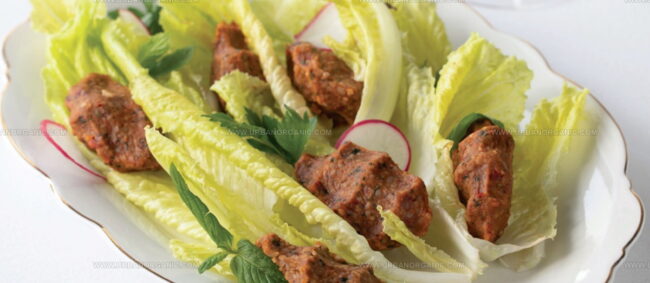
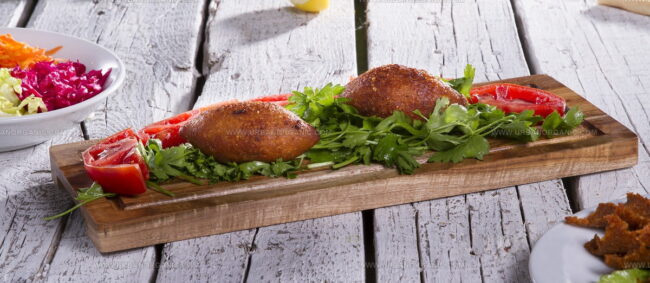
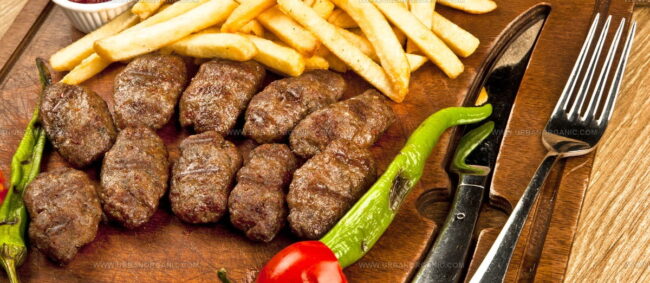
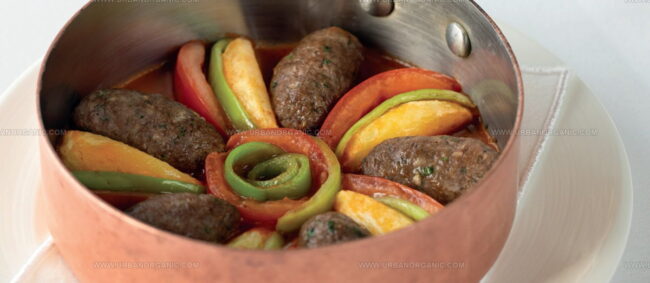
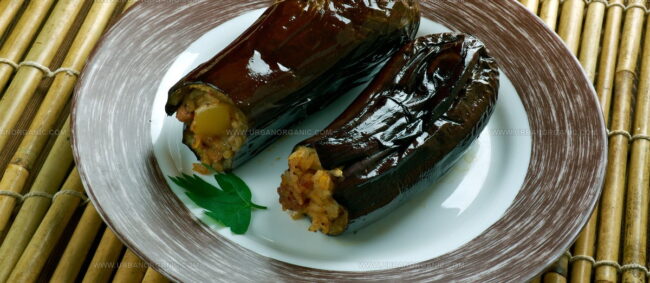
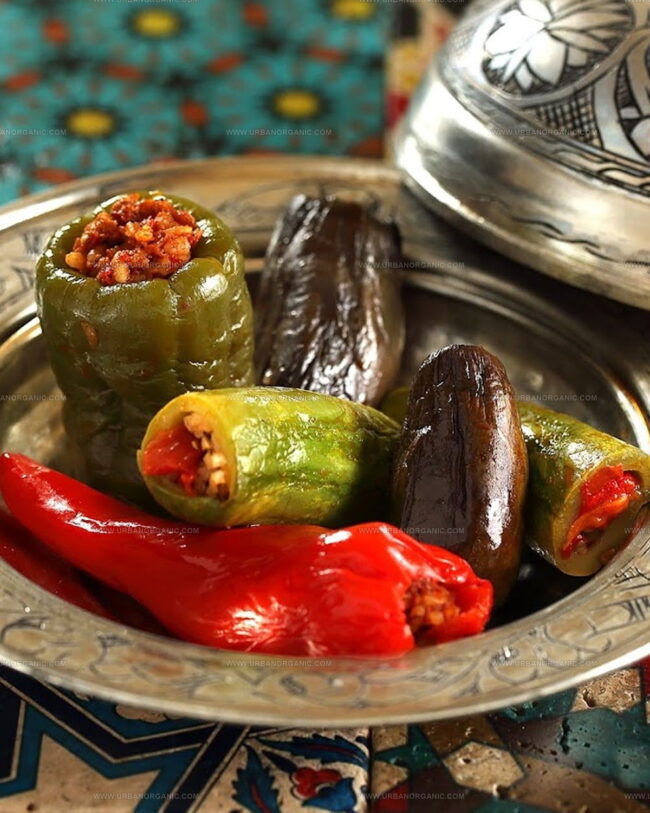
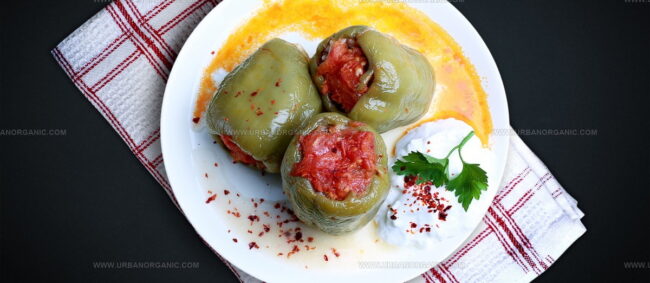
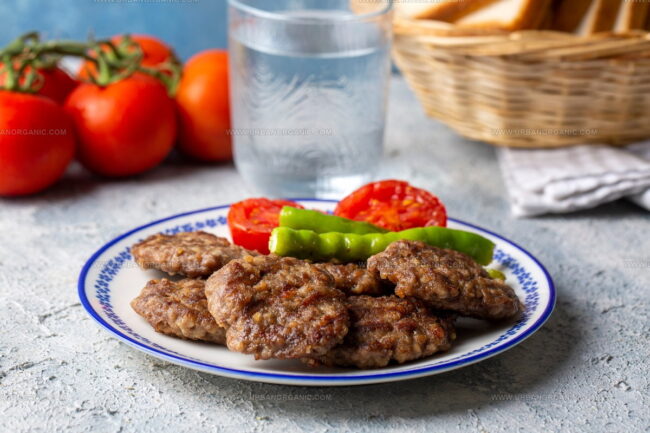
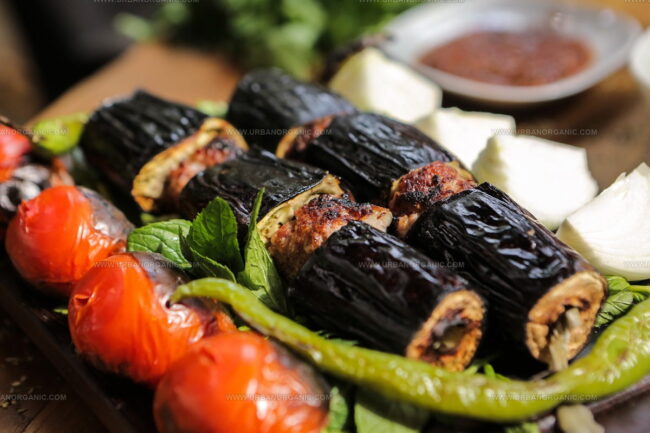
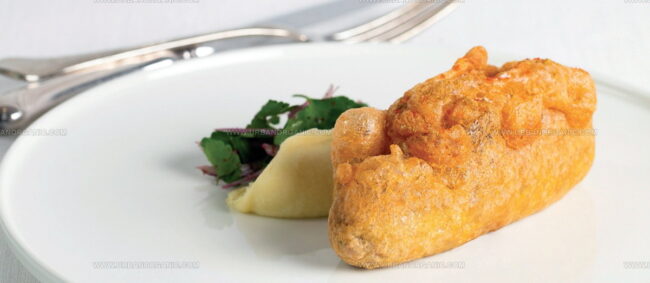
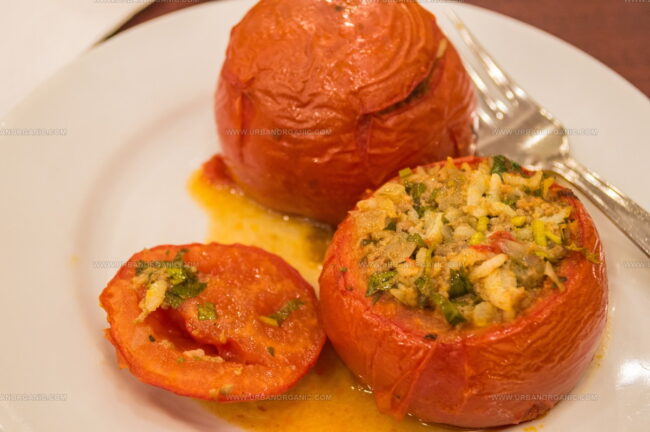
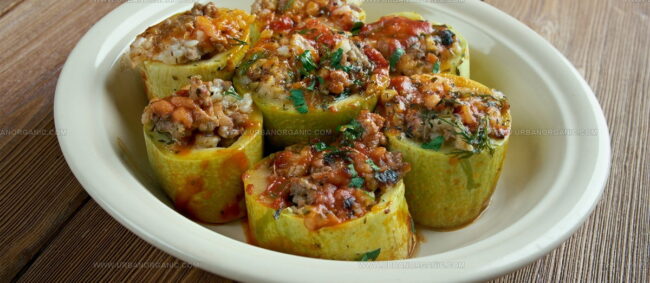
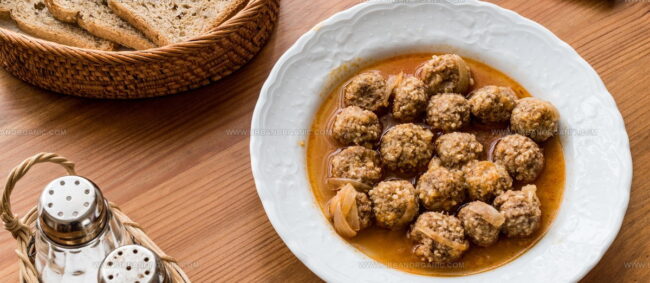
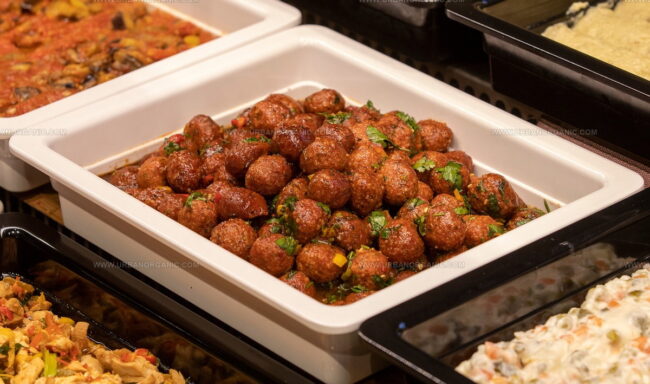
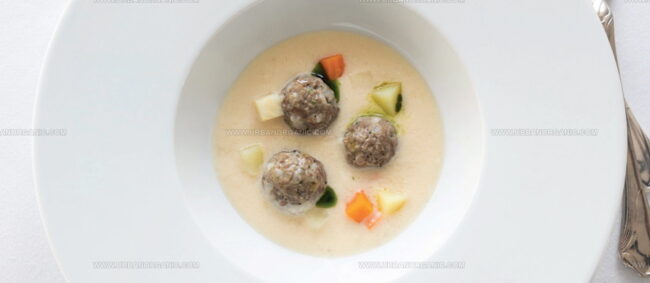
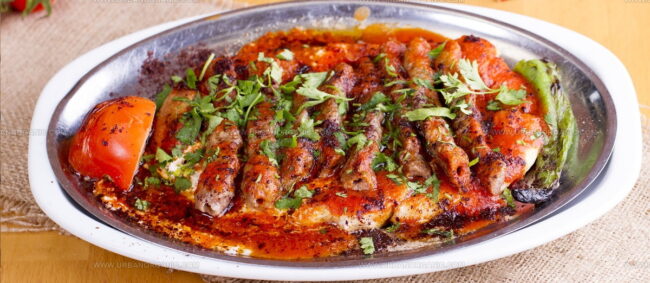
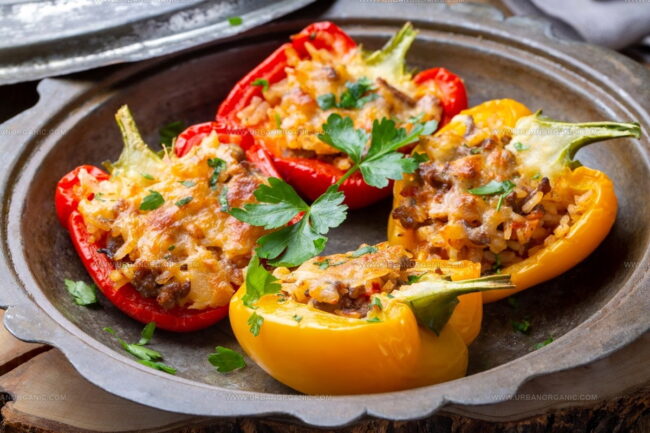
Jessica Martinez
Pastry Chef & Recipe Developer
Expertise
Organic Baking Techniques, Gluten-Free Recipe Development, Southwestern Dessert Specialties, Food Styling and Photography
Education
Santa Fe Community College (SFCC)
Jessica brings the sweet side to Urban Organic with her passion for baking and love for the Southwest. She trained at Santa Fe Community College and has built a career creating beautiful, gluten-free, and organic desserts that feel both nostalgic and new.
She believes baking should be fun, creative, and open to everyone, no matter your diet or skill level. Jessica’s recipes are simple enough to follow, but special enough to remember.